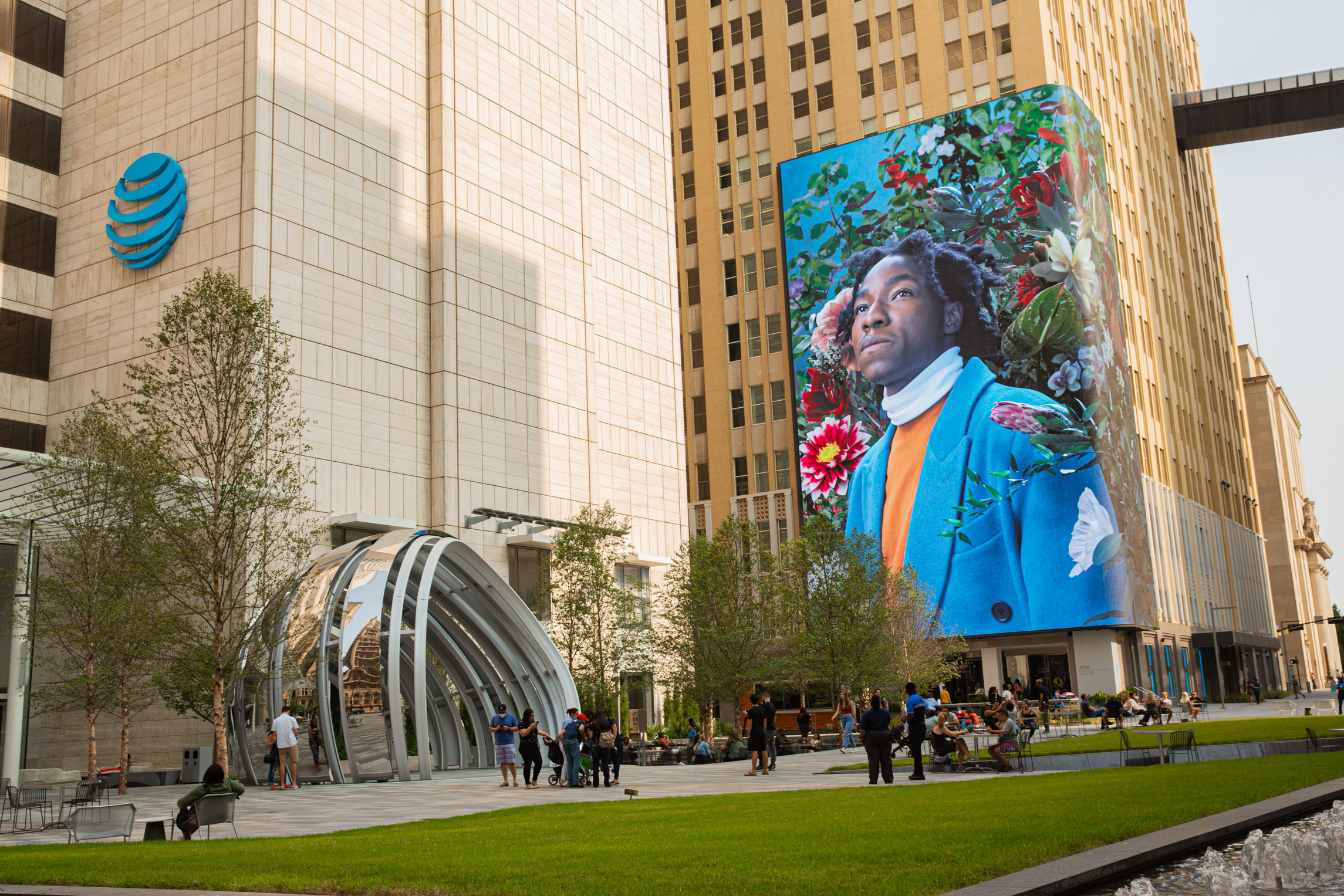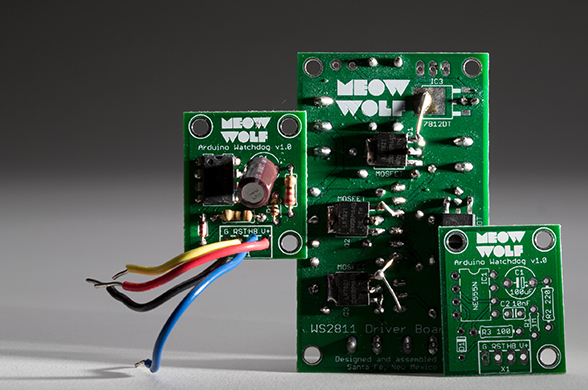Inspiration
Britelite’s AWE 2019 Highlights
Oct18
Shared By Felicia Constantine
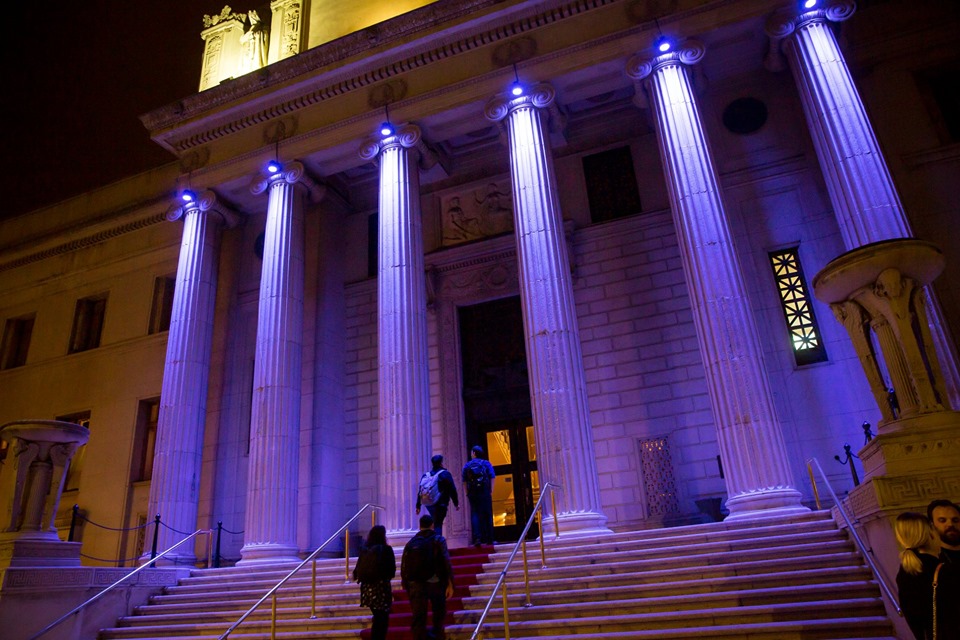
We took some time to visit the Augmented World Expo in Santa Clara, a large yearly exhibition of Augmented Reality and Virtual Reality systems.
I’ve been to AWE a few times, and the thing I most noticed this year is the very obvious trend towards enterprise oriented AR as the most common element. In previous years there was a much stronger focus on consumer oriented VR, but this year the expo and panels seemed very oriented towards enterprise AR. At a guess, I’d say that 70% or more of the exhibitors were working in the enterprise space.
I expected to see much more attention around wireless VR such as the Oculus Quest and the HTC Vive Focus, but there was not a lot in evidence.
Notable exhibits
There was a lot to see. Here are some of the things that caught my attention as being particularly interesting.
Varjo VR1 and XR1
Everybody was talking about the Varjo XR system!
Varjo is a company from Finland making an extremely high resolution VR headset, the VR1. They do this by using two displays per eye, one for filling in the visual field of view, and another ultra-high resolution display for the center of the field of view. At AWE they announced and showed their new product, the XR1, which includes two 12MP cameras for video passthrough.
Niko Eiden, the CEO of Varjo, very kindly arranged for me to try both devices. The VR1 is certainly impressive. The demo I saw was a simulation of an air traffic control tower. The built in eye tracker allowed me to glance at airplanes, and then see information about them, and their predicted path. The very high resolution of the display also allowed me to comfortably read very detailed displays in the simulation.
While the increased resolution was very noticeable, it didn’t seem like this alone would be a killer app. However, the XR1 product was extremely compelling. The two cameras mounted on the outside allow for very high resolution video to be fed back to the user, with full binocular vision. Digital objects can be combined with this video with a degree of fidelity that is not possible with translucent-type AR displays.
The demo I saw involved a full-size, very realistic, car materialising in the space. Once I was used to the presence of this virtual object, the video feed could be replaced with a total simulated environment. The ability to switch back and forth between very high quality AR and VR was truly astounding.
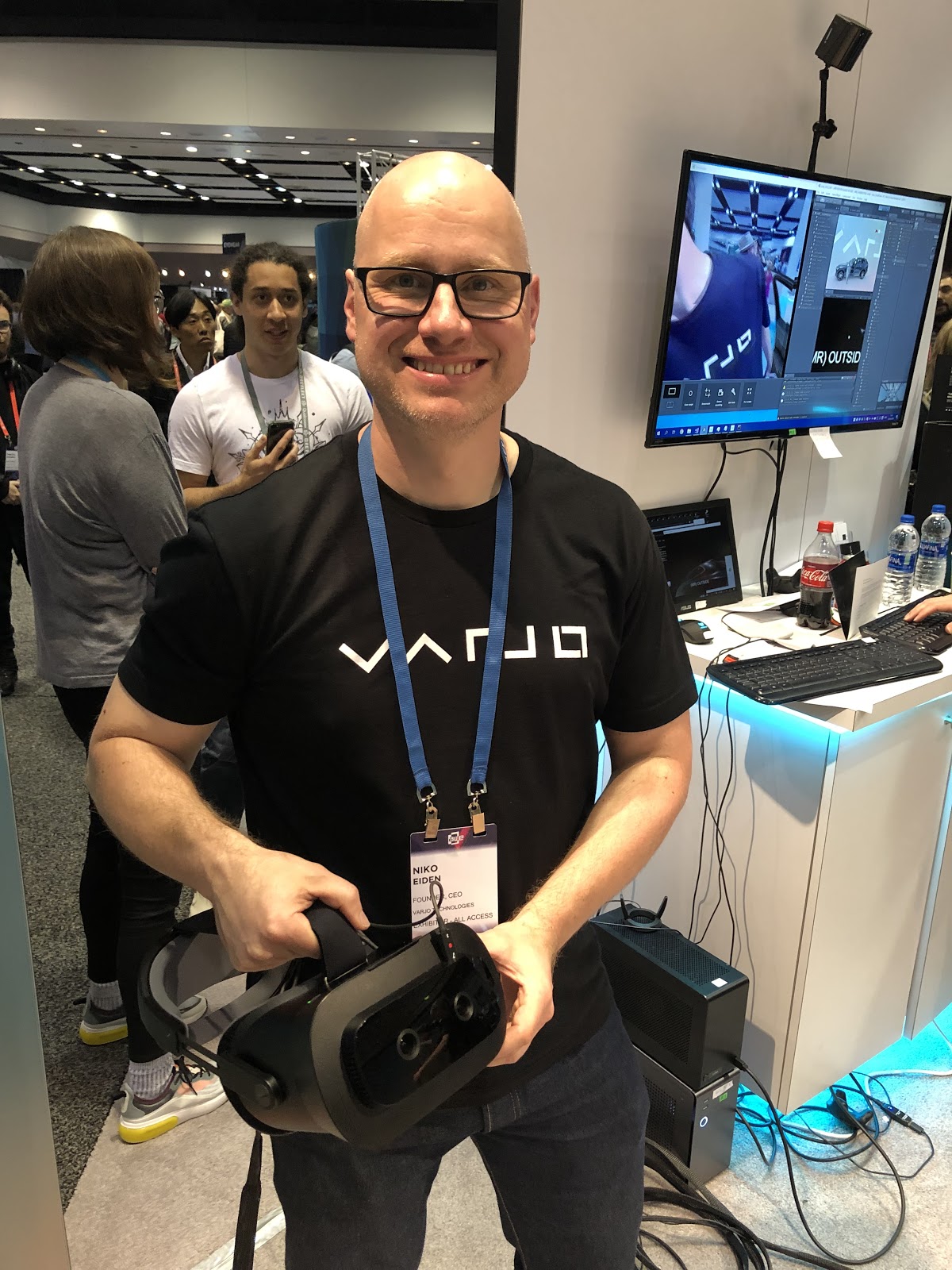
Vuforia model-based tracking
Vuforia is an AR software company, originally part of Qualcomm and now part of PTC. They’ve been making cross-platform AR software for a while, and their development kit includes support for marker-based and markerless tracking.
At AWE they were showing off their newly released system for model based tracking, where the software looks for a particular object, and overlays an augmentation layer.
Their demo allowed you to “look inside” a model car, visualizing structural elements, motor, etc. I was impressed with the reliability and speed with which the AR elements tracked the physical model.
8th Wall
8th Wall makes software for enabling AR applications on mobile devices. In particular, they support both web-based (no app) and native (app-based AR), with their own flexible tracking systems.

At AWE they were showing off their new image tracking system, where an image (eg. a poster) can turn into an animated AR feature. This can be used as the same time as their existing markerless system.
Scape.io
Scape.io is a software company that makes a system for allowing apps to accurately place AR content in outdoor spaces. They are doing this by creating high fidelity 3D mesh models of cities, which can then be leveraged by apps for accurate placement of 3D content.
I wonder to what extent they will overlap with what Microsoft is doing with Minecraft Earth?
They have currently digitized a large portion of London.

Lenovo ThinkReality headset
The first thing you notice in the Lenovo booth is the cleverness of using the Thinkpad branding to launch an AR product. The Think brand values (enterprise, durability, practical design) work well for a headset designed primarily for the enterprise.
The headset itself is comparable to a first generation Hololens, similar in resolution and field of view, but with better ergonomics due to using a separate belt pack to hold the battery and computer.
Their demo was of a field technician carrying out repairs on a Thinkpad laptop. In general, it felt practical and useful, clearly using lessons learned from the old IBM manuals and field maintenance guides.
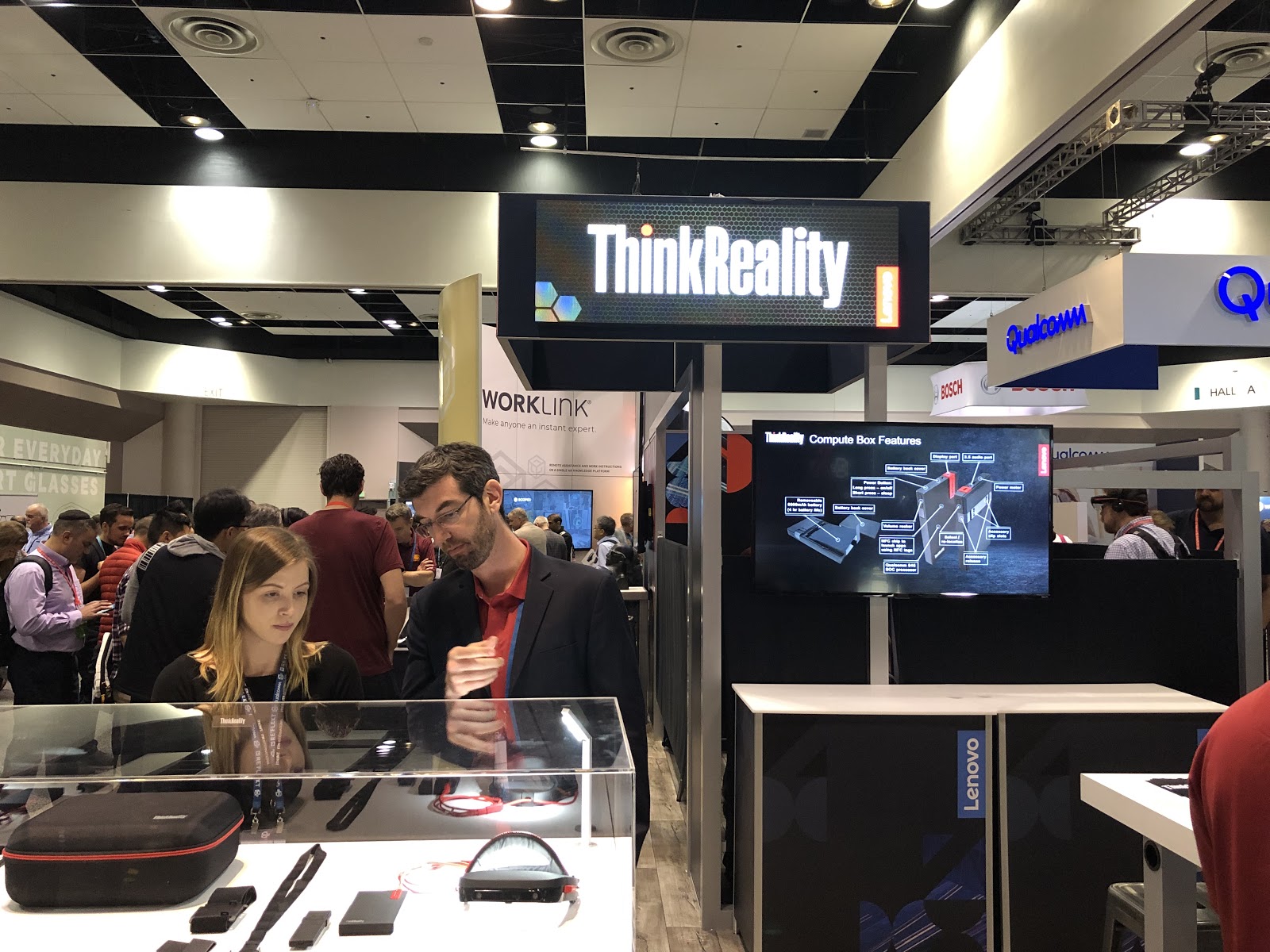
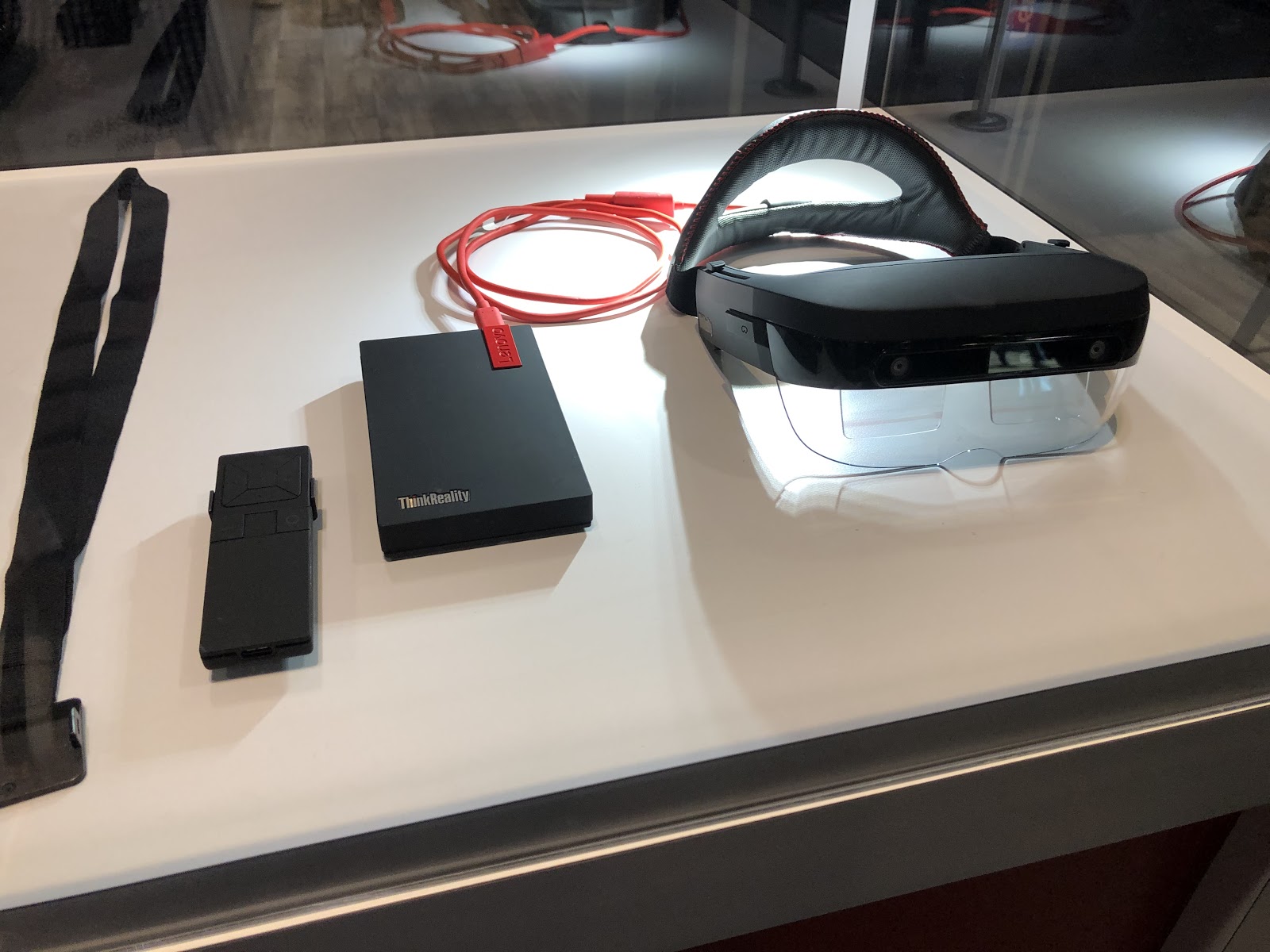
RealMax headset
The Realmax AR headset was part of the Playground section of AWE. It uses a number of sensors including a Leap Motion sensor and what appears to be a depth camera to accurately map a user’s hands and the surrounding environment.
The demo involved 3 simple games, including 3D graffiti. The most intriguing part of this system is just how much being able to see your hands in digital space adds to the experience.
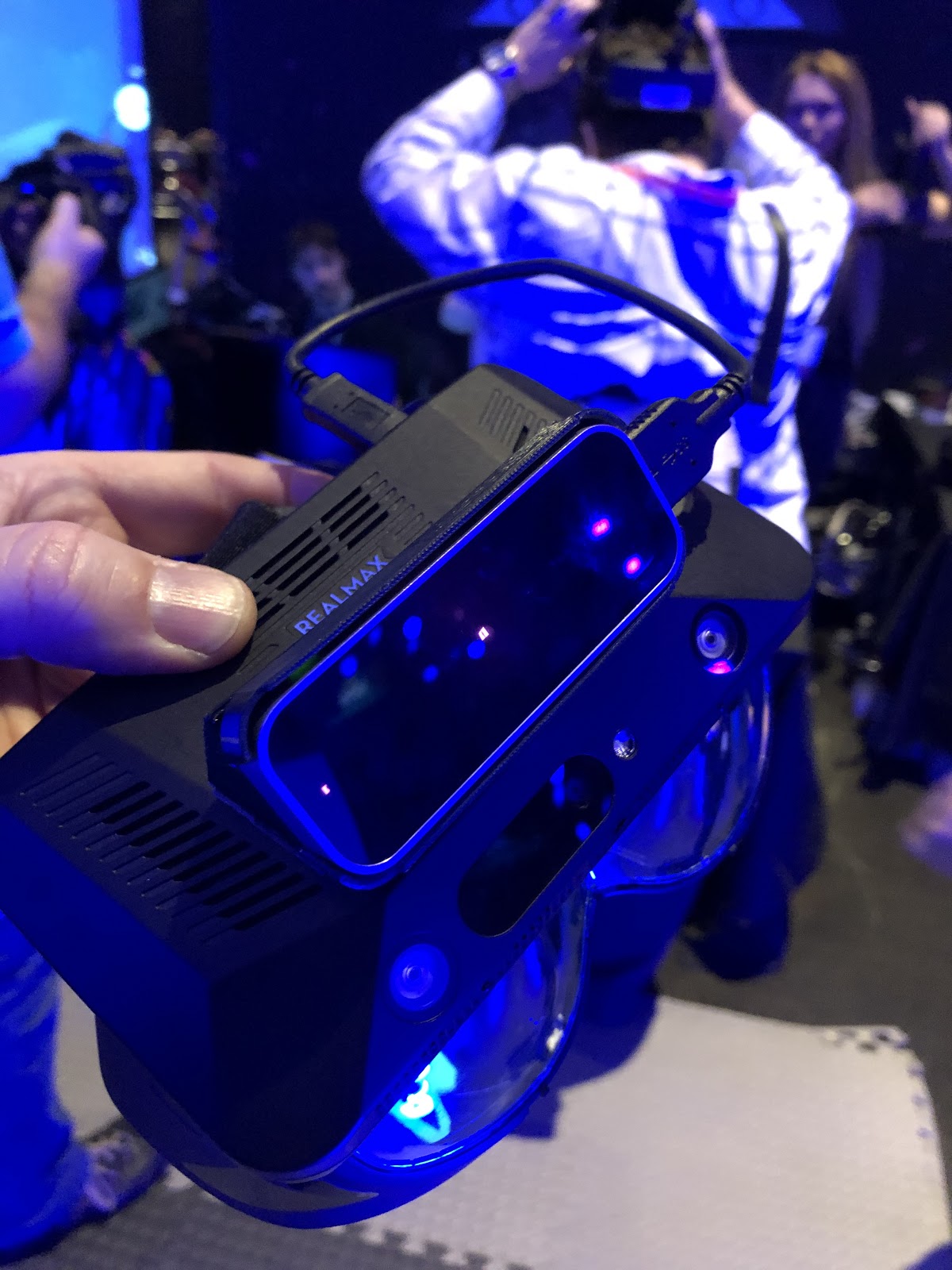
Looking Glass volumetric display
The Looking Glass volumetric display has been getting a lot of attention. At first glance, it looks like a solid block of clear plastic. However, it incorporates a series of prismatic optical elements, so 3D shapes appear to float within it. Correct parallax is maintained as you move around it, creating a convincing sense of 3D (albeit in rather low resolution).
At AWE they announced their Looking Glass Pro, which includes an auxiliary control screen and is touch sensitive as well. They appear to be able to import 3D models directly from CAD software such as Solidworks, providing a 3D auxiliary display for a designer.
The demo below incorporated a Leap Motion hand tracker for interaction.

DreamCraft Dreamset
Dreamcraft is a company that specializes in theme park rides and attractions. While they provide a full service for design and implementation, one of their most interesting innovations is a system for enabling VR in an environment where multiple people will share a headset.
Their solution is to create a plastic mask which a user puts on first, adjusting size and fit. Then when they enter the ride, they clip on the actual working parts of the VR headset, which are tethered to the ride. At the end of the ride, the headset unclips (automatically, in some cases) and the plastic mask can be put through a cleaning cycle.
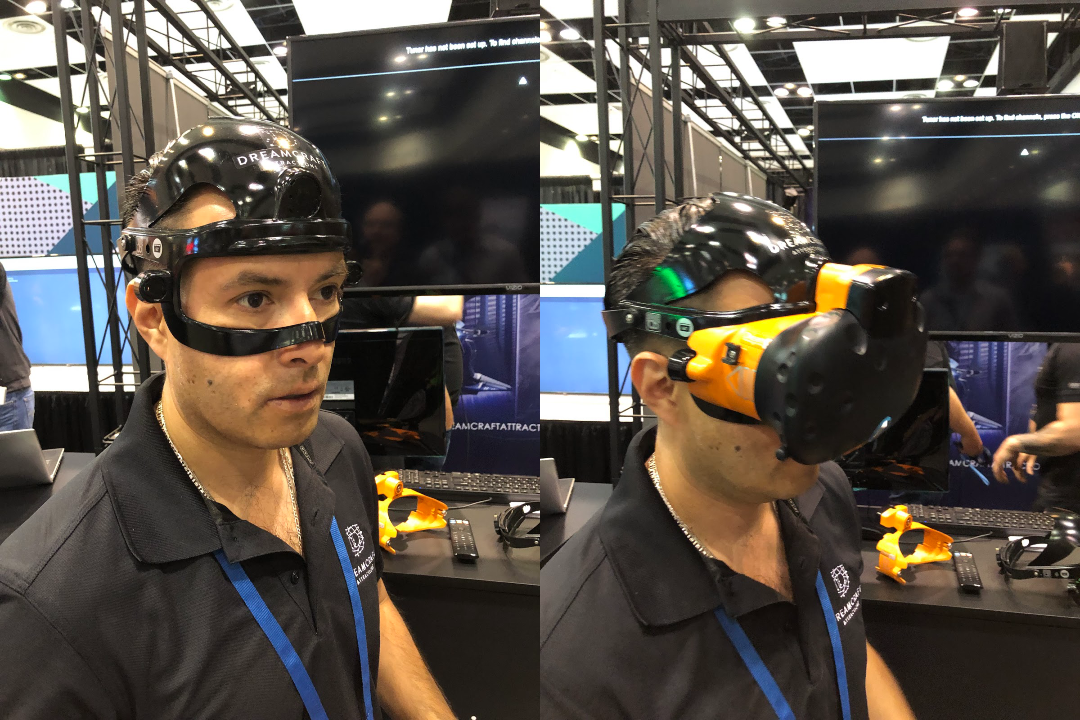
Looks AR bag
The tote bag handed out to AWE attendees turned out to have some tricks up its sleeve: each bag is actually unique, and if you choose, you can connect to an app that allows other users to scan your bag and see your name and other info.
Looks collaborated with AWE on the official app of the conference, and markers using their technology were scattered throughout the event.
Conclusions and observations
The most obvious conclusion is that right now, in the mixed reality space, Enterprise AR is where the focus is. There were a lot of vendors of AR glasses oriented towards field service and technicians. It seemed that most of these are more like eyeglass frames, designed to provide a simple overlay that is not spatially mapped.
More than one vendor of software applications pointed out that they are in a bind, since the Microsoft Hololens 1 is not available anymore, and it is not clear when the Hololens 2 will become available. In the interim, they are scrambling for a relatively robust solution that supports accurate 3D tracking - so far nothing matches the Hololens 1 in this sense.
Software support is clearly maturing, with multiple vendors striving to produce platforms that support multiple deliver devices (headset, tablet, phone) across multiple operating systems. In fact, the most promising solutions vendors are those that support different technologies, beyond goggles and screens.
The focus on enterprise means that integration with back-end systems is key. Several vendors are starting to work in this area. Britelite has been working in this space for a while, and has proven expertise in integrating immersive technology front ends with enterprise APIs for payments, retail and others. It is exciting to see how the sector has embraced the importance of this integration.
Another big area of focus is managing detailed models of 3D objects and spaces. Increasing demand for markerless, persistent and multi-user AR means that organizations should be able to work with 3D point clouds.
Finally, an overwhelming trend was the large number of vendors using the Unity development environment to support their products, both hardware and software.
However, the user experience across devices still has room for development. There is so much focus on improving the direct sensory experience (resolution, tracking, FOV) that there has not been much thought about the overall experience.
These are all areas that Britelite has worked in, both in the context of AR as well as other types of experience. Read about the key success factors for Spatial AR here: /blog/spatial-ar/
Britelite Immersive is a creative technology company that builds experiences for physical, virtual, and online realities. Read more about our capabilities or view our work.
